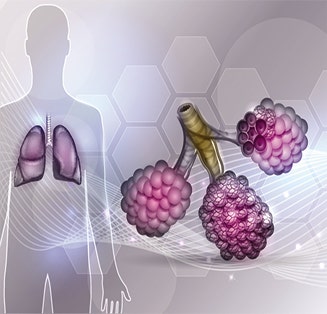
Phenotypic profiling of CFTR modulators in patient-derived respiratory epithelia
Pulmonary disease is the major cause of morbidity and mortality in patients with cystic fibrosis, a disease caused by mutations in the Cystic Fibrosis Transmembrane conductance Regulator (CFTR) gene. Heterogeneity in CFTR genotype–phenotype relationships in affected individuals plus the escalation of drug discovery targeting specific mutations highlights the need to develop robust in vitro platforms with which to stratify therapeutic options using relevant tissue. Toward this goal, we adapted a fluorescence plate reader assay of apical CFTR-mediated chloride conductance to enable profiling of a panel of modulators on primary nasal epithelial cultures derived from patients bearing different CFTR mutations. This platform faithfully recapitulated patient-specific responses previously observed in the “gold-standard” but relatively low-throughput Using chamber. Moreover, using this approach, we identified a novel strategy with which to augment the response to an approved drug in specific patients. In proof of concept studies, we also validated the use of this platform in measuring drug responses in lung cultures differentiated from cystic fibrosis iPS cells. Taken together, we show that this medium throughput assay of CFTR activity has the potential to stratify cystic fibrosis patient-specific responses to approved drugs and investigational compounds in vitro in primary and iPS cell-derived airway cultures.
Learn more about the SpectraMax® i3x Multi-mode Microplate reader
Learn more about the FLIPR® Membrane Potential Assay Kits

May is cystic fibrosis
awareness month
Authors
Saumel Ahmadi1,2, Zoltan Bozoky2,3, Michelle Di Paola2,3, Sunny Xia1,2, Canhui Li2, Amy P. Wong4, Leigh Wellhauser2, Steven V. Molinski2,3, Wan Ip5, Hong Ouyang5, Julie Avolio5, Julie D. Forman-Kay2,3, Felix Ratjen6,5, Jeremy A. Hirota7, Johanna Rommens8,9, Janet Rossant8,4, Tanja Gonska6,5, Theo J. Moraes6,5, and Christine E. Bear1,2,3
- Department of Physiology, University of Toronto, Toronto, ON, Canada
- Programme in Molecular Medicine, Research Institute, Hospital for Sick Children, Toronto, ON, Canada
- Department of Biochemistry, University of Toronto, Toronto, ON, Canada
- Programme in Developmental and Stem Cell Biology, Research Institute, Hospital for Sick Children, Toronto, ON, Canada
- Programme in Translational Medicine, Research Institute, Hospital for Sick Children, Toronto, ON, Canada
- Department of Paediatrics, University of Toronto, Toronto, ON, Canada
- Firestone Institute for Respiratory Health, Division of Respirology, McMaster University, Hamilton, ON, Canada
- Department of Molecular Genetics, University of Toronto, Toronto, ON, Canada
- Programme in Genetics and Genome Biology, Research Institute, The Hospital for Sick Children, Toronto, ON, Canada
No modifications were made to the content of this publication.
Open Access This article is licensed under a Creative Commons Attribution 4.0 International License, which permits use, sharing, adaptation, distribution and reproduction in any medium or format, as long as you give appropriate credit to the original author(s) and the source, provide a link to the Creative Commons license, and indicate if changes were made. To view a copy of this license, visit http://creativecommons.org/licenses/by/4.0/.